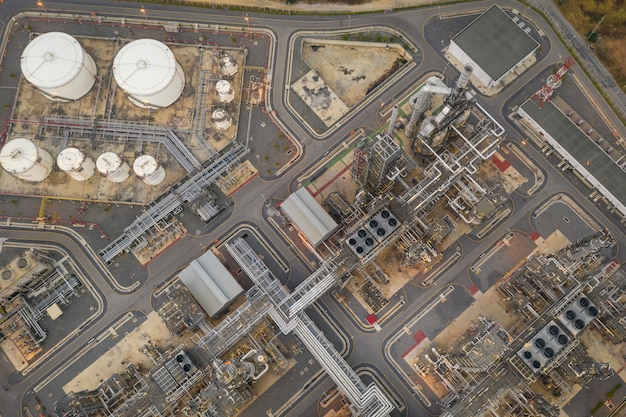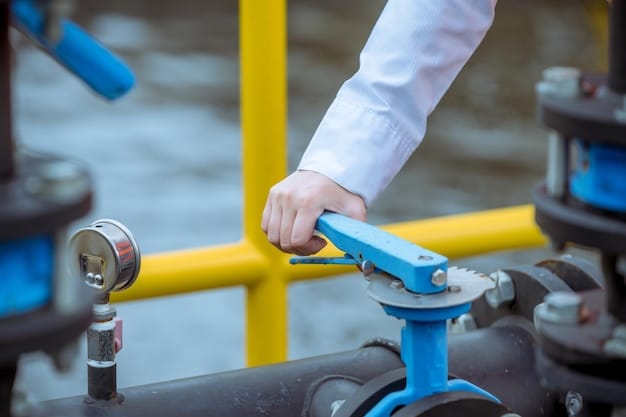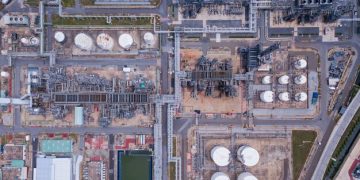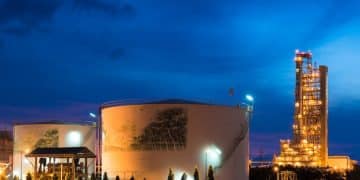How US Businesses Can Leverage EPA Methane Emission Rules

US businesses can leverage the new EPA regulations for methane emissions reduction by adopting advanced monitoring technologies, investing in infrastructure upgrades to minimize leaks, and capitalizing on tax incentives and grants available for clean energy projects.
How can US businesses turn environmental regulations into opportunities? The Environmental Protection Agency’s (EPA) new rules on methane emissions reduction are a significant shift, and understanding how to navigate them is crucial. This article will explore how US businesses can leverage the new EPA regulations for methane emissions reduction, turning compliance into a competitive advantage.
Understanding the EPA’s Methane Emission Regulations
The EPA’s new regulations on methane emissions are designed to significantly reduce methane leaks and emissions from the oil and gas industry. Understanding the specifics of these regulations is the first step for businesses to leverage them effectively. These rules impact various aspects of operations, from monitoring to infrastructure.
Key Components of the EPA Regulations
The EPA’s regulations target the reduction of methane emissions through several key measures. Knowing these components is essential for compliance and strategic planning.
- Enhanced Monitoring: Companies are now required to implement advanced monitoring technologies to detect and repair methane leaks promptly.
- Infrastructure Upgrades: Regulations push for upgrades to existing infrastructure to minimize methane leaks during operations.
- Reporting Requirements: Detailed reporting on methane emissions is now mandatory, ensuring transparency and accountability.
Businesses need to be proactive in understanding these components to not only comply but also to find opportunities for innovation and efficiency.

Investing in Advanced Methane Detection Technologies
One of the primary ways US businesses can leverage the new EPA regulations is by investing in advanced methane detection technologies. These technologies not only ensure compliance but also improve operational efficiency and reduce waste.
Types of Detection Technologies
Several advanced technologies are available for methane detection, each with its strengths and applications. Selecting the right technology is crucial for effective monitoring and compliance.
- Optical Gas Imaging (OGI) Cameras: These cameras visually detect methane leaks, allowing for quick identification and repair.
- Continuous Monitoring Systems: These systems provide real-time data on methane emissions, enabling immediate responses to leaks.
- Satellite Monitoring: Satellites can detect large methane plumes from space, offering a broad overview of emissions.
By investing in these technologies, businesses can stay ahead of regulatory requirements and improve their environmental performance.
Implementing Infrastructure Upgrades for Leak Reduction
Leak reduction through infrastructure upgrades is another critical aspect of leveraging the new EPA regulations. Upgrading outdated or inefficient equipment can significantly reduce methane emissions and improve overall operational performance.
Investing in new equipment and processes not only reduces methane emissions but can also lead to significant cost savings in the long run. By minimizing leaks and improving efficiency, businesses can reduce waste and improve their bottom line.

Utilizing Government Incentives and Funding Opportunities
The US government offers various incentives and funding opportunities to encourage methane emissions reduction. Businesses can leverage these programs to offset the costs of compliance and invest in clean energy projects.
Available Tax Credits and Grants
Several tax credits and grants are available for businesses investing in methane reduction projects. Understanding these opportunities is crucial for maximizing financial benefits.
- Methane Abatement Tax Credit: This credit provides financial incentives for projects that capture and utilize methane emissions.
- EPA Grant Programs: The EPA offers grants for innovative projects that reduce methane emissions.
- State-Level Incentives: Many states offer additional incentives for clean energy projects, including methane reduction initiatives.
By taking advantage of these incentives, businesses can significantly reduce the financial burden of complying with the new EPA regulations.
Adopting Best Management Practices for Methane Reduction
Adopting best management practices (BMPs) is essential for achieving significant methane emissions reduction. These practices involve operational changes, training, and continuous improvement efforts.
Best management practices ensure that methane reduction efforts are sustainable and effective. By integrating these practices into their operations, businesses can create a culture of environmental responsibility and continuous improvement.
Collaborating with Industry Partners and Experts
Collaboration with industry partners and experts can provide valuable insights and resources for methane emissions reduction. Sharing knowledge and best practices can accelerate progress and improve overall performance.
Benefits of Collaboration
Collaborating with industry peers and experts offers numerous benefits, including access to cutting-edge technologies and shared learning experiences.
- Access to Expertise: Collaborating with experts provides access to specialized knowledge and skills.
- Shared Learning: Sharing experiences and best practices can accelerate learning and improve outcomes.
- Collective Innovation: Collaboration can foster innovation and lead to the development of new technologies and strategies.
By working together, businesses can overcome challenges and achieve greater success in methane emissions reduction.
| Key Point | Brief Description |
|---|---|
| ✅ Monitoring Tech | Advanced tech for detecting and fixing methane leaks. |
| 💰 Gov Incentives | Utilize tax credits and grants for methane reduction. |
| ⚙️ Infra Upgrades | Upgrade infrastructure to cut methane emissions and save costs. |
| 🤝 Collaboration | Partner with experts to improve reduction strategies. |
Frequently Asked Questions (FAQ)
▼
The new EPA regulations aim to reduce methane emissions from the oil and gas industry significantly. They include enhanced monitoring, infrastructure upgrades, and mandatory reporting requirements to ensure transparency and accountability.
▼
Businesses can benefit by improving operational efficiency, reducing waste, and taking advantage of government incentives. Reducing methane emissions also enhances their public image and sustainability efforts.
▼
Optical Gas Imaging (OGI) cameras, continuous monitoring systems, and satellite monitoring technologies are effective for detecting methane leaks. The best choice depends on the specific needs and scale of the operation.
▼
The Methane Abatement Tax Credit and EPA grant programs are key incentives. Many states also offer additional incentives for clean energy projects, including methane reduction initiatives.
▼
Collaboration provides access to expertise, shared learning experiences, and collective innovation. Working with industry peers and experts can accelerate progress and improve overall performance in methane emissions reduction.
Conclusion
Leveraging the new EPA regulations for methane emissions reduction presents a significant opportunity for US businesses. By investing in advanced technologies, utilizing government incentives, and adopting best management practices, companies can turn compliance into a competitive advantage while contributing to a cleaner environment.





